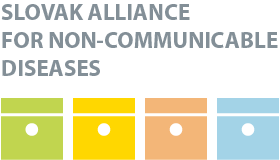—
HPI Network > HPI - Health Policy Institute > Health System in Slovakia > 2. Organization and governance > 2.4 Decentralization and centralization
2.4 Decentralization and centralization
Wednesday, 04. May 2011, 22:18 — HPI
| << PREVIOUS
2.3 Organization |
Introduction – Organization – Financing – Resources – Provision – Reforms – Assessment – Conclusions – Appendices |
NEXT >>
2.5 Planning |
State administration was decentralized in 1990 by re-establishing local self-government at the level of the municipalities. In 2002, self-government was also introduced at the regional level by establishing the self-governing regions. Decentralization of competences and finances, and political decentralization followed. Decentralization in the health sector focused on partial delegation of state power to the self-governing regions.
In 2003, ownership of the majority of state health care facilities was transferred to the self-governing regions and municipalities. Large type III hospitals with polyclinics and university hospitals, as well as highly specialized institutions and specialized hospitals, remained under the administration of the Ministry of Health. The ownership and managerial competences of type II hospitals with polyclinics for secondary care were devolved to self-governing regions and type I hospitals with polyclinics for primary care were devolved to the municipalities.
Coordination of health policy between the Ministry of Health and self-governing regions is problematic. This is due to the fact that the interests of the elected regional governments are not always aligned with those of the Ministry of Health. For example, in 2007, the Ministry of Health proposed to reduce the number of beds in hospitals managed by self-governing regions but not those managed by the Ministry of Health. The proposal was not supported, although Chief physicians of self-governing regions are also subordinate to the Minister of Health. By introducing the SHI system in the early 1990s, the responsibility for health care financing was transferred to health insurance companies, but this move was not accompanied by effective regulatory instruments. These instruments remained with the Ministry of Health, which did not bear direct responsibility for its decisions. This resulted in huge debts in the system. With the 2004 health care reform, health insurance companies were given more influence and became purchasers of health care services instead of mere payers. By delegating the competences to establish a network of providers from the Ministry of Health to health insurance companies, selective contracting was enabled. The Ministry of Health has maintained the regulatory tool of requiring a minimum network of health care providers.
The 2004 health reform has also shifted monitoring competences over health insurance, provision and purchasing to a new independent authority, the HCSA.
News
The amendment of the Decree on emergency medical service
Health insurance companies returned over 400 thousand €
The HCSA received 1,647 complaints last year
A half million people will earn more
Most of public limited companies ended in the black
Debt of hospitals on premiums has grown to nearly € 105 MM
Slovak health care may miss € 250 million next year
Profits of HIC amounted to € 69 mil. last year
Owners of Dôvera paid out money but did not paid taxes
Like us on Facebook!
Our analyses
- 10 Years of Health Care Reform
- New University Hospital in Bratislava
- Understanding informal patient payments in Kosovo’s healthcare system
- Analysis of waiting times 2013
- Health Policy Basic Frameworks 2014-2016
- Analysis of informal payments in the health sector in Slovakia
- Serbia: Brief health system review
developed by enscope, s.r.o.
